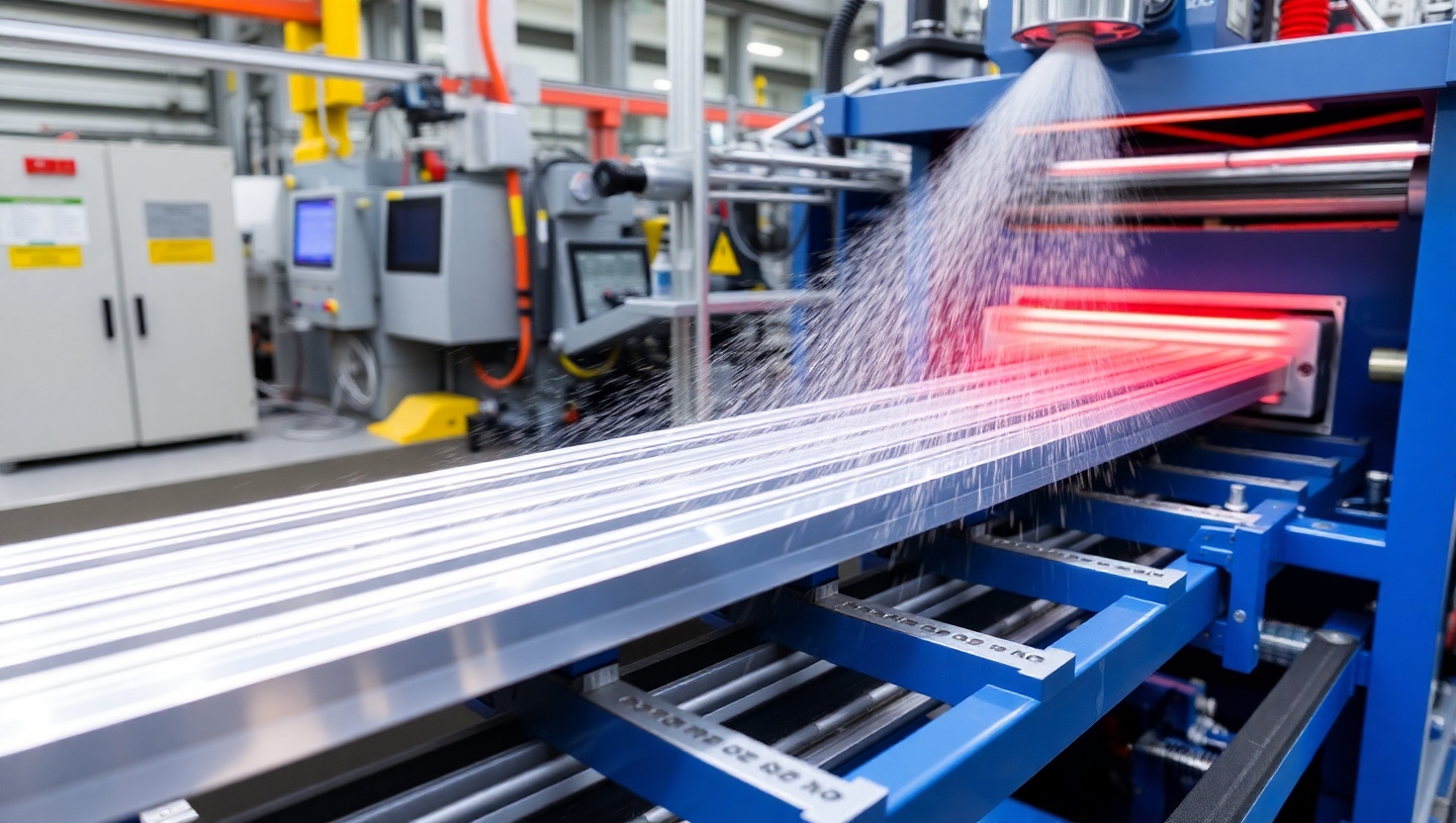How to Optimize Cooling Rates for Better Extrusion Performance
Published by: ALUTimes | Date: July 18, 2025
Table of Contents
- Introduction
- Why Cooling Rate Matters in Extrusion
- Cooling Methods in Aluminum Extrusion
- Effect of Cooling Rates on Material Properties
- Techniques to Optimize Cooling Rates
- Advanced Technologies for Cooling Control
- Best Practices for Consistent Cooling
- Case Study: Optimizing Cooling at AeroAlumTech
- Conclusion
- Disclaimer
Introduction
Cooling is a critical step in the aluminum extrusion process, directly influencing the mechanical properties, dimensional accuracy, and surface finish of the final profile. Optimizing cooling rates ensures that the extruded material retains its intended characteristics and performs well in downstream applications.
Why Cooling Rate Matters in Extrusion
During extrusion, aluminum exits the die at high temperatures, often over 500°C. If cooling is too fast or uneven, it may result in warping, internal stresses, or poor metallurgical quality. On the other hand, slow cooling can reduce productivity and result in suboptimal mechanical strength.
Cooling Methods in Aluminum Extrusion
- Air Cooling: Natural or forced air streams used immediately after extrusion.
- Water Quenching: Spray or immersion quenching systems for rapid cooling.
- Mist Cooling: A combination of air and water mist for controlled cooling intensity.
- Inline Fans: Positioned strategically to regulate surface temperature gradually.
Effect of Cooling Rates on Material Properties
Cooling impacts several physical and mechanical aspects:
- Grain Structure: Faster cooling leads to finer grains and improved strength.
- Hardness: Proper cooling increases hardness post-aging and heat treatment.
- Residual Stress: Controlled cooling minimizes internal stress formation.
- Surface Finish: Inadequate cooling can cause discoloration or oxide film defects.
Techniques to Optimize Cooling Rates
- Use thermal imaging cameras to monitor exit temperatures in real-time.
- Automate fan and mist activation based on alloy and shape.
- Segment the cooling zones to adjust intensity across profile thickness.
- Experiment with extrusion speed adjustments to control heat retention.
- Regularly maintain water filters and spray nozzles to ensure uniform quenching.
Advanced Technologies for Cooling Control
Emerging technologies help extrusion plants achieve better cooling consistency and traceability:
- IoT-Enabled Sensors: Offer predictive temperature monitoring across the line.
- Closed-Loop Systems: Automatically adjust quenching based on target profile temp.
- AI-Based Predictive Cooling: AI models can preemptively optimize based on profile data and historical trends.
Best Practices for Consistent Cooling
- Train operators in temperature-critical points during extrusion.
- Install real-time monitoring tools across all cooling stations.
- Calibrate thermocouples and pyrometers regularly.
- Define alloy-specific cooling curves in SOPs.
- Audit quenching performance after every production batch.
Case Study: Optimizing Cooling at AeroAlumTech
Challenge: Inconsistent hardness in 6xxx series profiles
Solution: Implemented sensor-based mist quenching with AI-controlled zones
Outcome:
- Hardness deviation reduced by 32%
- Scrap rate dropped from 5.8% to 2.1%
- Extrusion line productivity increased by 11%
Conclusion
Optimizing cooling rates is not just about speeding up production — it’s about controlling microstructure, ensuring dimensional accuracy, and meeting industry demands. Whether through better equipment, data, or training, extrusion companies that prioritize cooling efficiency will gain competitive advantages in quality and throughput.
Disclaimer
This article is for informational purposes only and not a substitute for professional engineering consultation. Always consult technical experts before modifying production processes.

